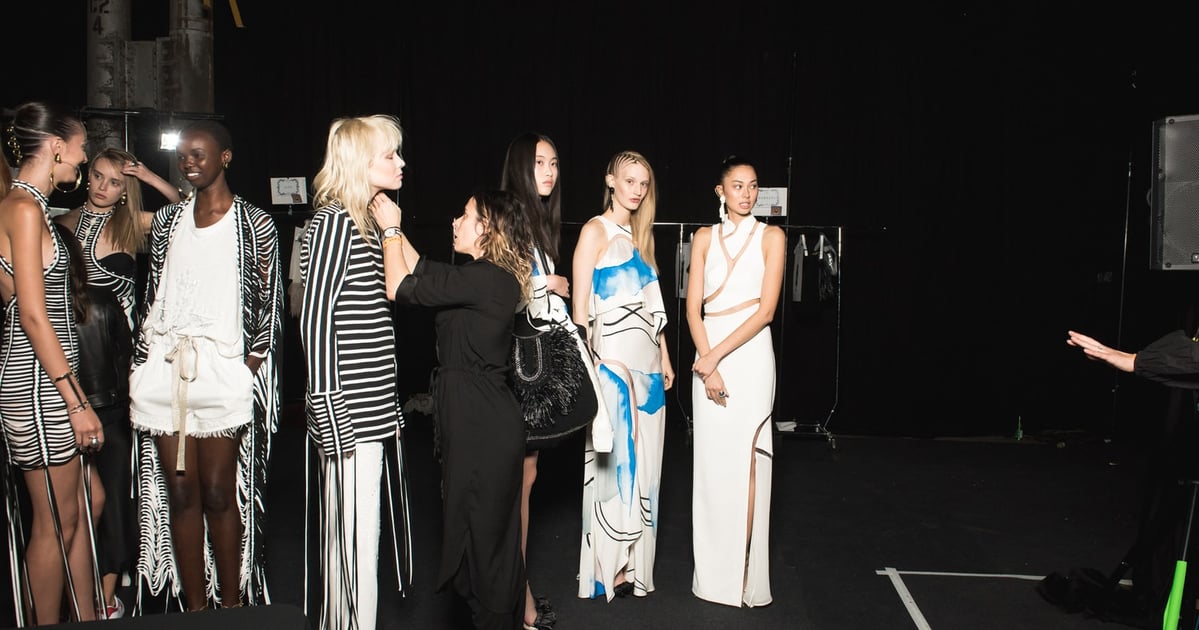Wage Gap is Still Very Real, and Its Impact on Women is Getting Worse – WWD
Despite the Equal Pay Act becoming federal law, progress has been slow. In fact, given the current rate of progress, a new study from DebtHammer shows that it will take more than 257 years to reach wage equity.
When asked, only 30 percent of women said their employers pay them fairly. Which makes sense since on average, American women earn 73 cents for every dollar a white male earns and there continue to be signs of a wage gap in 98 percent of jobs. This means that women who are full-time employees in the U.S. lose nearly $930 billion in total per year due to the wage gap.
Notably, according to the National Partnership for Women and Families’ May 2022 data sheet, the wage gap is often even larger for women of color. The organization’s findings show that while white women earn 73 cents for every dollar a white male earns, Latina women are paid just 49 cents, Black women earn 58 cents, Native American women earn 50 cents, and Asian American, Native Hawaiian and Pacific Islander (AANHPI) women are paid 75 cents.
“It blows my mind that the economic gap persists in this third decade of the 21st century,” said Beth Bengtson, founder and chief executive officer of Working for Women, an organization that works at the intersection of business and social change with a vision is for all women to achieve economic independence.
This includes wages as well as the Pink Tax, Bengtson said. “Since we haven’t made a dent in this gap in the last 20-plus years, despite so much public attention and the growth of women in the workforce, clearly something’s not working. It seems to me that it’s time to change the conversation. Society doesn’t benefit if we don’t fix this — it’s everybody’s issue, not only a women’s issue. When a woman’s individual financial security improves, research shows that it creates a ripple effect that flows into businesses, industries, communities and entire economies.”
According to a Credit Karma study conducted in March for Equal Pay Day, two in three women say their current salary is holding them back from reaching their financial goals, including paying off debt and saving for retirement. And yet, the company’s data also showed that 31 percent of women don’t feel comfortable asking for a raise. Of the 46 percent of women who have asked for a raise, only 26 percent were approved for the raise.
When Credit Karma asked consumers in its survey about their experiences finding out a colleague was making more money than them, 25 percent of women said they believe gender played a role, while just 12 percent of men said gender was a contributing factor. McCreary told WWD the findings indicate women still feel that they’re being underpaid compared to their male counterparts simply based on their gender.
“In some cases, it’s even making it difficult for women to afford necessities, which was the case for 35 percent of women who say their salary is holding them back financially,” said Colleen McCreary, chief people officer and financial advocate at Credit Karma.
Important to consider when understanding the full cost of being female is what has become known as the Pink Tax. The Pink Tax is the premium or gender-based pricing that is placed on products designed for women, including certain razors, soap and shampoo. The New York City Department of Consumer Affairs shows an overall 13 percent price difference, with the leading category being shampoo and conditioner (hair care), with a 48 percent difference. Razor cartridges, razors and lotions reflect an 11 percent price difference, followed by deodorant, body wash and shaving cream, which show a 3 to 6 percent price difference.
Why does the wage gap continue today? While education levels may have been the answer previously, DebtHammer’s statistics show that men have not had higher education levels for at least two decades. Instead, the company finds that the leading reasons for the wage gap today are:
- Workplace discrimination and pay secrecy policies
- Overrepresentation in low-paid jobs and devalued work
- Caregiver discrimination and motherhood penalties
A big factor that contributes to the wage gap, according to DebtHammer, is that women more commonly work in industries such as education, health care and the service industry. In comparison, male-dominated industries, like science, technology and finance, generally pay more. Still, the company’s data shows that when women enter a specific male-dominated industry, the average salary for those positions sees a drop.
At the same time, McCreary said, “The pay gap is a systemic issue, which makes it difficult to resolve. The gap is built on both conscious and unconscious biases, which comes up most often in the interviewing and hiring process as well as in companies with performance review processes at the manager level determining pay and promotions. That’s why it’s important for companies to have structured interviewing in place or more specific directions/reviews to help limit the chances of unconscious bias when making pay decisions.”
DebtHammer points out that while at every job level on a company ladder, women earn less than men, the higher women climb on the ladder the more the pay gap widens.
As a result of the wage gap, nearly 32 percent of women said they looked for other job opportunities once they learned a wage gap was present at their current place of employment. Data finds that 58 percent of female employees would leave their current position for a job that offers better pay transparency.
“Because of its systemic nature, it’s important for companies to do the work to address the pay gap within their own organizations,” McCreary said. “Then, once they’ve established a philosophy around pay equity, it’s important to set goals around how they plan to achieve pay equity in the near and long term. This is crucial. Without clear goals, there’s no accountability, and when it comes to closing the pay gap, accountability is key.”
Only 30 percent of women said their employers pay them fairly.
Drobot Dean – stock.adobe.com
Credit Karma’s data found that this is important for both hiring and retaining employees, with 71 percent of Americans saying it’s important for an employer to prioritize pay equity, including 75 percent of women and 66 percent of men.
Sadly, this wage gap is not an American problem. During the World Economic Forum, which took place on July 13, members of the Geneva-based think tank similarly projected the current cost-of-living crisis to hit women the hardest, pointing to the widening gender gap in the global labor force. The forum estimates that it will take 132 years for the world to reach gender parity, citing salaries and economic opportunity, education, health and political empowerment as the four main factors.
“In face of a weak recovery, government and business must make two sets of efforts: targeted policies to support women’s return to the workforce and women’s talent development in the industries of the future,” said Saadia Zahidi, managing director of the World Economic Forum. “Otherwise, we risk eroding the gains of the last decades permanently and losing out on the future economic returns of diversity.”
To combat the wage gap, DebtHammer notes the “key first steps are to increase pay transparency across the nation, put an end to occupational segregation based on gender roles, give women more access to paid leave and child care and encourage union jobs.”
For its part in making a change internally, Credit Karma has implemented role-based compensation, which standardizes pay to avoid issues with compensation over time.
“Closing the pay gap is an issue I’m incredibly passionate about and something that we’ve heavily invested in as a company,” McCreary said. “[Role-based compensation] helps standardize job architectures and promotion calibrations and removes merit increases and bonuses, which have a high potential for bias. Since implementing this structure, we’ve seen way stronger retention rates. While not all companies have the resources to implement pay equity, to move forward, we need to shift away from legacy compensation models based on meritocracy and outdated industry standards and adopt new, more equitable standards.”
“COVID-19 brought these conversations about women’s equality back into the light, but these issues have been here all along,” Bengtson said. “If it remains just women talking about this, change will remain elusive. Since our leaders are still mostly men, we need more men to stand up and support women. Over 100 years ago, men stood alongside women and signed the Declaration of Sentiments for women to gain the right to vote; they need to do that again until we are treated equally in all areas.”
In terms of investing in women, Bengtson points out that while evidence shows that investing in women benefits all humanity, capital isn’t flowing there. Only 1.9 percent of philanthropy goes to women and girls, according to IUPUI Women’s Philanthropy Institute. Working for Women works to connect businesses to nonprofits to enable more women to reach economic independence. Imagine, she said, if women-owned businesses, which represent $1.9 trillion in revenue, each donated just 1 percent — how many lives could be improved?
An outspoken champion for equal pay, Venus Williams has used her platform to start her Privilege Tax initiative. This initiative will give shoppers the option to donate $1 at checkout when they purchase at participating retailers or brands. Participating companies include Williams’ brand, EleVen, along with Tom Brady’s TB 12, Tracy Anderson, Ellevest and Credo, among others.
“If you love them, pay them,” says the EleVen Privilege Tax page. Proceeds raised from the Privilege Tax initiative go to support Girls Inc., working toward inspiring girls to be strong, smart and bold.
FOR MORE WWD BUSINESS NEWS:
Field Notes: Full Carts and Full Potential
Field Notes: BNPL Leaders Continued Evolution
Consumer Confidence Shrinks as Expectations of Living Costs Rise






